
|   |

|   |
In support of the solo - Lalitha Venkat e-mail: lalvenkat@yahoo.com November 28, 2014 ‘Ek, Anant: Revisiting the Solo’ was curated and presented by Bharatanatyam dancer Priya Venkataraman and Odissi dancer Shagun Butani at the compact CD Deshmukh Auditorium, India International Centre on November 21 and 22, 2014 at New Delhi. Both days saw morning lectures and discussions on the topic and evening performances. About the choice of theme for this event, Priya Venkataraman says, “The idea is to create a platform for solo dance in the capital, develop an audience for the solo format and discuss issues that seem to be plaguing the solo dance scene, in particular. Through ‘Ek, Anant,’ we want to provide educational inputs to young practitioners and hope the discussions bring about a healthy debate on the state of the 'solo' and the future it holds.” For Shagun, the idea is to bring back the culture of solos the way it was before the urge to create frenzied group productions took over. Change is inevitable but “as artistes we should not lose out on the simplicity of our old dance forms.” Both mornings commenced with a 12minute film featuring performance clips of Durgalal, Birju Maharaj, Leela Samson, Charu Sija Mathur, Saswati Sen, Sangeeta Dash, Bharati Sivaji sourced from the Sangeet Natak Akademi archives, that had the veterans in the audience sighing in nostalgic admiration. Morning one featured talks by Ashok Vajpeyi, Dr. Kiran Seth and Malavika Sarukkai. Ashok Vajpeyi (Hindi poet, critic, translator, editor and culture activist):  The original solo dancer is Shiva. Much later came Krishna who started group dancing. Most of our classical dancers have been soloists. Then one became many. Nothing is singular in India. Classical music remains solo at best, maybe sometimes a jugalbandi. Mallikarjun Mansur has played to empty halls as well as full house. If classical music can survive by being solo centred, why can’t solo classical dance survive? Originality remains in the solo. The job of the classical artiste is to train the audience to appreciate solo works. The challenge in solo is apart from confidence, greater creativity is involved, and audience has to be animated. The presence of other characters has to be worked out, bringing the characters figuratively on stage. When I was a college student in Mumbai, I watched a performance of Vedantam Satyanarayana Sarma in stree vesham for 2 hours not knowing it was a male dancer, such was the magic he created. Bring back solo to the focus but not to the exclusion of group work. Once in a while, you can take to creative exploration on a larger scale. Solo activity has now become group in the west. We alone have the magic of solo creativity. Erosion of imagination suffers in group work. It is reduced to only seeing and does not evoke any imagination as everything is depicted. Abhinaya is under assault as there is loss of abhinaya in group work. Subtlety of abhinaya is being awed by Balasaraswati’s “Krishna nee begane…” where this huge woman becomes the small Krishna, creating magic. I strongly plead that the time has come - be yourself… while the self is open to others, it cannot become others. You cannot be yourself if you are not a solo performer, at least in the classical tradition. There is deep abstraction involved in solo. Our classical dance creates supreme fiction. Your creativity is under stress when you do solo. So, please do group work once in a while but do solo and create supreme fiction! Dr. Kiran Seth (founder of SPIC MACAY): 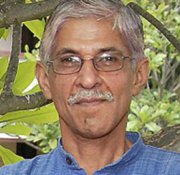 There is a place for group work but I am strongly of the opinion that one should be concerned about the dwindling of solo work. There are lots of experimentations happening to throw light on social issues. It is good, but in classical arts, the original idea was to take people to the realm of mystical creativity. Social issues are by products. Dancers are pandering to the public by presenting popular issues. Indirect mode could add to the appeal of their work. What one person can do in abstract domain is phenomenal. Popularity is always there when people can understand easily. But it takes a great deal of courage to take people into the alpha zone if one has been there. Some great examples are Krishnan Nair, Kelubabu and Sanjukta Panigrahi. At some point in time, the audience will catch on. Experimentation can be done but the artiste should be able to take the audience to that zone, raise the level of consciousness. Sufi Hazrat Inayat Khan said there are 4 stages in the development of art – imitative phase, suggestive phase, creative phase, when art no longer remains art but becomes the distinct expression of the soul. While importance of social issues cannot be ignored, the beauty of our classical solos needs to be emphasized. Completely uninitiated people have been floored by solo dancers. Malavika Sarukkai (Bharatanatyam dancer): 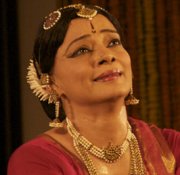 Focus on solo in the last several years has been slightly displaced. It is important to acknowledge other explorations in dance. As an artiste engaged in solo work for 40 plus years, several changes make me pause and make me upset too. To describe the moment of happening which happens in solo, one word can be luminosity. Tradition is like a flow, a river, but it has to change according to patronage, performance demands and expectations of viewers. Primarily in my solos, I ask how does one keep to the core, to the centre of it and yet innovate. It’s a language…how can I make it speak, how can my art extend itself. The grammar is like a grid, tightly interlocked, in the first 15 years of our training. After that, it opens up and shows flexibility and suppleness. Sustained sadhana gives it freedom of expression. We evolve as people as we go through the journey. What is the core of classical dance that remits a positive energy in us? At the core is that certain magic moment. It is important to hold the moment to bring that intangible magic in our lives. We have to search for that. We see a lot of entertainment around us. Now, everything has to be entertaining. Are solo and group work meant to entertain? We must ask ourselves if we want our work to entertain, be pleasant and not too thoughtful. Artistes work so hard, so can we not move it into spaces beyond? Isn’t that what classical dance should be doing? To transcend body is the mastery, where you get the abstraction; otherwise you remain in the world of real. The creative artiste should have command over the language and convey “the vision of the world I see and I want you all to see it.” There has to be a sense of rootedness in the dance and then go on to explore. Dancers in their prime need to be documented. They are like a tree with flowers and fruits and need to be nurtured. While pressure of doing group work is sometimes successful, the organizer is from the outside and does not know the inner workings of the dancer. Soloists have to train very hard to find the body language musicality of dance to internalize and focus their craft with so much awareness that it touches the large audience. I don’t think dancers are working hard on that, whatever their proficiency. Group work is also arduous and difficult. What we need to do is, we should value the solo and also enjoy the group. Everything has to sell. Dance has become a commodity, so how do we search for excellence? Isn’t excellence something we owe ourselves and dance? Dance for dance. Stay with that magic, immensity and profundity that Indian dance offers us. With so many conflicting things to deal with, young dancers need mentoring when they want to go solo, so they get guidance to deal with chaotic things. The standard of dance will also improve. Discussion: There was an interesting exchange of opinions between the audience and speakers. 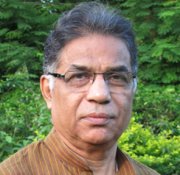
Dr. Subas Pani
Moderator Dr. Subas Pani (Indian Administrative Service, scholar in Geeta Govinda, author) commented that managers of repertories and gurus should let go of their dancers to allow them to prove themselves in solo. Great dancers may also not transcend into the top realm all the time, so instead of trying to impress, dancers should be true to themselves. The issue is whether a solo artiste can hold the attention of a large audience. Not all dancers reach out to their audiences, but it is definitely possible in smaller theaters. Some dancers have chosen to limit their performances to solos maybe for creative satisfaction. Some struggle with solo, duet and group. It’s a matter of creative choice of the artiste. Dancer Rama Vaidyanathan feels it is a vicious circle. We don’t get organizers and organizations to promote solos, so many budding solo performers get nipped in the bud. That the stage is too big is an excuse. If Khajuraho can present solo work, why not Konark? The onus is not only on the dancer, but also on government organizations and private organizers to curate solo work. ICCR is only excited about projecting group work abroad. Solo is declining by the year. It’s an alarming trend. Shagun Bhutani called for unity in the dance fraternity to address issues where young and upcoming as well as old and upcoming dancers would benefit! Sujata Vijayaraghavan said in Carnatic music, they got together to fight the system. There is enough room at the top and many have come to the top, but that has not happened in dance. Dancers themselves don’t come to watch dance. Leela Venkataraman mentioned the Festival of Germany where there were mediocre groups but no solos. The German govt representative had laid down conditions that only groups should be presented and no solos as they were not interested in solos! The tragedy was, our government did not bother to speak for India and that is why dancers need to have a collectively strong voice. For Aditi Mangaldas, the size of a stage, number of people in the audience, geography or history is immaterial, when there is excellence. Then solo or group does not matter. “We as artistes should see how much mediocrity is going on stage. It is so pitiful to see this,” she said. Photographer Avinash Pasricha said he looks for dance in the eyes of the soloist. In a group when teachers put many of their students on stage, one does not know where to look. Malavika Sarukkai feels dancers are all put together in one cauldron and made to boil. If we recognize mediocrity, we need to upgrade our skills by moving on and not staying where we are. Madhavi Puranam (editor of Nartanam) opined that maybe we are not looking at the fact that classical solo dance is not meant for thousands of spectators. How can a spectator relate to a dancer so far away, plus lights are a problem, sound is a problem and so on. But solo can be impressive and we need to pay attention to the way it is created. The second morning featured talks by Leela Venkataraman, Sujatha Vijayaraghavan and Aditi Mangaldas with Dr. Sunil Kothari as moderator. Leela Venkataraman (critic, scholar, author, historian and commentator on Indian dance): 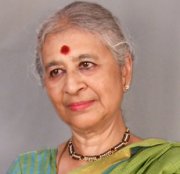 When we talk about the solo form and discuss it in relation to group form or duet, there are a few historical facts. In the dance renaissance period, turbulent changes took place. Professional dance families found themselves out of context and place. Gurus had to teach entirely different repertoire. In the process of emerging from the royal darbar to the proscenium, there was also a change of context. Group forms began to take on solo version - Kuchipudi and Manipuri - and solo form began to take group manifestation. Dance dramas like in Kuchipudi and Yakshagana were in group forms, but when it comes to training, it is a one to one thing. In Kuchipudi village, many old gurus in their 80s said they all had individualized training in dance and music as solo artistes. Bharatanatyam and Odissi evolved as solo dance forms. We now have the margam format. It was a whole process of understanding the feeling of bodilessness. It was deliberately designed that way to reveal subtle energies and of delving inwards to self realization going from outside to inside. How can you change a solo into a group item? In a recent performance, seeing “saami naan undan adimai” in group became like a mockery with no feeling. Group is a visual spectacle but does it bring about emotional spaces? What happens when so much emphasis is given to group? Birju Maharaj said that our strength is solo and I would be disturbed if group were to take over. When most don’t get the chance to perform solo, are we going to make group a convenience for lesser talented dancers? I find that many, who have danced in group, go on to become teachers. What kind of teacher would emerge from one who has not experienced a solo presentation? Like Carnatic musicians, one should stick strongly to solo. We need to have a change of mindset. We need intimate theater spaces to present solos and abhinaya items and not lose ourselves in the spectacular aspect of group work. Birju Maharaj always said that in a group, everyone should be a potential soloist. One can’t understand the intricacies of all the dance forms. Does that art touch me, appeal to me and put me through an experience? Solo dance can give that kind of feeling. Sujatha Vijayaraghavan (bilingual writer, speaker, musician, composer and dance scholar): 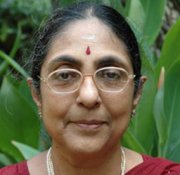 My experience is limited to Bharatanatyam and Chennai dance scene. There is no danger of the solo going extinct. In the Music Academy annual fest, we have a larger crowd for solo, so this year we have reduced the number of group presentations. Gurus have obligations to present all their students. Over the hill gurus still want to perform. Trending now are cricket, films, music and dance comes last. While there are lots of music recordings, there are very few of dancers. The press also has not been doing its part. You can write off the vernacular press who don’t even know what they are covering. Most dance critics list the items. There is no core knowledge or the experience of having watched scores of dancers. Do we get informed people to write, or get good writers and then teach them about dance? At our dance wing Natyarangam, we present only solos and only Bharatanatyam. We know talent is out there so we created thematic festivals. We have talent scouts and do not entertain applications. We have launched the Poorna Margam project where the dancer should be extremely talented in nritta and abhinaya. This brings to my mind Doraikannu. The temple honored her by allowing her to perform in the temple one day in a year. She would perform Bhikshatana. Her blind husband refused an eye operation after his Bhikshatana was gone! To see abhinaya better, the hall must have screens to project the abhinaya parts to the audience. DVDs are not a substitute to experience the actual dance performance. Aditi Mangaldas (Kathak dancer):  A few years ago, I attended a solo fest ‘Now the sun has set.’ I was fortunate to see three performances and what I learnt from them has informed the way I look at solo dance. That spirit has never left me. The world of imagination brings me to the tradition of where it started. The solo was required to get the patronage of the nawabs. We then needed our gurus to nurture the dance form. Then it was confirmation with exploration. Exploration requires a different kind of sadhana. We dance solo but solo is not in isolation. I’m alone on stage, but I’m not lonely. My heart has experienced a gamut of expressions and we focus the energies. Each one in the audience comes with his/her own experiences. I’m interested in opening a window and get the audience to look through it. Not to put a full stop in a sentence but to put a comma… enjoy the fragrance. The temple, the court, now the stage. Sometimes I feel I’m transported to Roman times. I feel as if the tabla player is the lion and I’m in an arena – pakhawaj and tabla sometimes shout at you! One should have spontaneity, improvisation in rhythm and the courage to dance one’s own dance. Young people nowadays are very well informed. But the mention of dance makes them uncertain. Give them something like a positive challenge. Challenge their imagination and they will come back. Sometimes, the best response to dance is from those who are not familiar with it. Discussion: 
Dr. Sunil Kothari
Moderator Dr. Sunil Kothari (dance historian, scholar, author and critic) commented that “as critics we have sustained the mediocrity of the dance presented. A good critic and writer can beautifully communicate to the audience about what was danced. I feel in Music Academy, people enjoy the music more than the dance. If you dance well, the dance talks.” Sujatha Vijayaraghavan said in group work, deficiencies are hopefully overlooked. About 80% of dancers don’t know music. 95% of dancers don’t know any Indian language properly. Dr. Subas Pani opined that there are issues with dancers, critics and audience. All have to get together and solve the issues. Photographers Avinash Pasricha and Srinivasan also voiced their observations. The discussion concluded with a Tamil quote by Sujatha read out by Leela Venkataraman: The music which transcends the voice, the dance which transcends the body, poetry which transcends the word, the rasika forgets himself. The speakers each got about 20 minutes to address the gathering, so there was no feeling of restlessness or ennui. The open discussion saw lots of interesting observations from the audience and lively exchange of ideas. The morning discussions were compactly and neatly conducted and it is a pity that the young dancers as well as established dancers of Delhi missed out on it. Both evenings featured 3 solo performances with the organizers insisting on live orchestra for all performers - Shagun Butani (Odissi), Neena Prasad (Mohiniattam) and A. Lakshmanaswamy (Bharatanatyam) on day one; Bimbavati Devi (Manipuri), Priya Venkataraman (Bharatanatyam) and Prashant Shah (Kathak) on day two. For Shagun Bhutani, “The solo format within most of our traditional dance idioms lets us fully explore our potential as a dancer. The challenge is not only to have the physical strength to go through the rigors of a solo performance but also maintain a link with your audience. Since we were trained to dance alone, it also helps to develop one’s virtuosity as a performer...to focus on what we alone can bring from the depths of our being, from years of training, from the very experiences that we have had in our individual lives… all that can only come to the fore when we have the freedom to be alone on stage. Live music adds to the alive content of the performance that recorded music lacks. Each participating musician adds his or her own art to the totality of the performance.” ‘Ek Anant’ was sponsored by Sudhaaya Foundation, in collaboration with the India International Centre. Lalitha Venkat is the content editor of narthaki.com About the evening performances of ‘Ek Anant’ Ek Anant: Solos and Slow Lows - Veejay Sai |